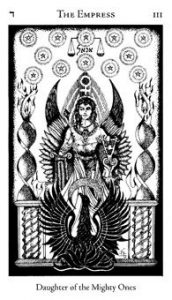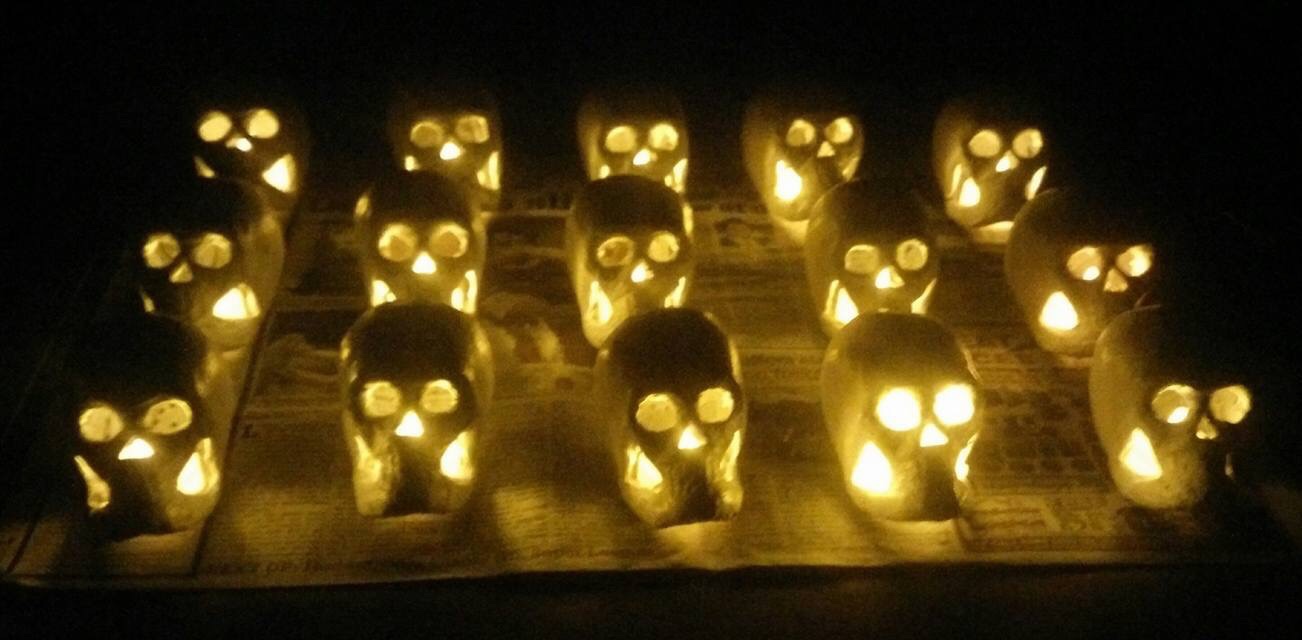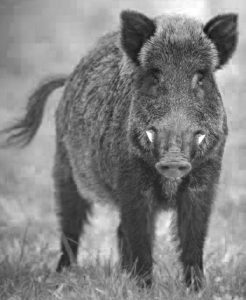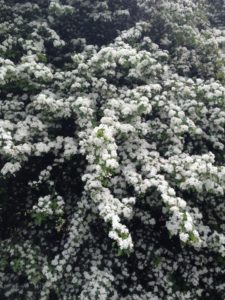 One of the biggest benefits of a training coven is that you never get stagnant. New people bring new thoughts, opinions, and experiences. Facilitating this kind of environment also means you have to be completely sure of your facts, because there will always be a neophyte who will happily shout up if you are wrong. And long may that last. The ability to question, to challenge, to ask why, is probably the most important characteristic of a successful witch.
One of the biggest benefits of a training coven is that you never get stagnant. New people bring new thoughts, opinions, and experiences. Facilitating this kind of environment also means you have to be completely sure of your facts, because there will always be a neophyte who will happily shout up if you are wrong. And long may that last. The ability to question, to challenge, to ask why, is probably the most important characteristic of a successful witch.
What this means for me is that I spend a lot of time looking historically at why we do things. I also analyse the effectiveness of our practises based upon this information. I’ve recently been doing a lot of work deconstructing the traditional circle cast and the stock liturgy involved in Wiccan ritual. My current obsession being the subject of the “Mighty Ones”.
I don’t think I’m the only one to have considered this conundrum at length either. Raven Grimassi, Christopher Penczak and Deborah Lipp have all debated the concept in more or less detail. I rather love Deborah Lipp’s statement in her book ”The elements of ritual”
Although I have worked with them in ritual for years, I know little about them, because the nature of the Guardians is elusive.
– The Elements of Ritual 1961
I suspect different covens have different ideas about these beings. The decentralised nature of Wicca is both a strength and a weakness; each group works with and develops that which they find most important, so what is sacrosanct lore to one may not even be discussed by another. As a result this isn’t an area that I have examined closely until now.
In 1949 Gerald Gardner published ”High Magic’s Aid”. A fictional story which has some very familiar passages. Gardner claimed to have written it as a work of fiction because his High Priestess had vetoed the idea of a non-fiction work about Witchcraft. In chapter 16 entitled The Making of the Great Circle, one of the protagonists casts a circle so familiar that it could be recognised by pretty much any neo-pagan today, regardless of their tradition.
”I summon, stir, and call thee up, thou Mighty Ones of the East, to guard this circle.”
At each of the cardinal points an invocation to the Mighty Ones is proclaimed. And in the following chapter the Priestess Morven also declares:
”I will in sooth call up the Old ones. The Mighty Ones, to be present and witness your Oaths.”
In 1978 Doreen Valiente publishes almost exactly the same words in her seminal work ”Witchcraft for Tomorrow”. However, now she uses the term Great Ones and Mighty Ones interchangeably.
”Then take up the bell, and pass again round the circle, starting at the east. Call upon the Great Ones who have gone before, saying:
I summon, stir and call ye, ye Mighty Ones of the East, the guardian spirits of witchdom, to witness these rites and to guard this circle
Now we are presented with an additional layer of meaning. Valiente’s words imply both ancestral aspect and a very specific link to those who practice the craft. Our Mighty Ones are no longer just elemental powers. They are our Witch mothers and fathers (whomever they may be). This concept is taken one further by David Rankine who suggests that:
We use the term Old Ones collectively to describe the spirits which govern the motion of the universe, the order of the stars and planets, as well as the spirits to be found in our environment around us, such as genius loci (“spirits of the place”), guardians of sacred sites, dryads, hamadryads, nymphs, fairies etc. The Old Ones are sometimes called the Timeless Ones.
– Magic without Peers, David Rankine & Ariadne Rainbird 1997
The concept of the Mighty Ones isn’t just Wiccan though. The Golden Dawn book on tarot known as “Book T’ give the Empress the title Daughter of the Mighty Ones. The Ceremonial Magician Madeline Montalban suggests that these beings are The Watchers.
The Mighty Ones are often called “The Watchers”, occult beings who dwell “in the spaces between the stars”, and whose task it is to see that nobody interferes with the rhythm of the Universe, expressed in occult symbolism as wheels within wheels.
– Prediction, March 1961
She believed that these watchers along with their daughter The Empress were in essence a kind of Guardians of the Galaxy trio intent on ensuring that pesky black magicians and ne’er do wells of the Occult world didn’t get their wicked way.
To prevent this kind of thing on a Universal scale, ancient occult law said there were the watchers, who lived in the Four Watch-towers, and that these Watchers had a daughter, now known as “The Empress”, or the Daughter of the Mighty Ones.
Her occult duty was to help counterbalance the disturbances that might occur through man’s intrepidity (or impudence) in occult practice (since in those distant days, science and the occult were not divorced).
An interesting concept. Especially as it then provides a possible solution as to why Magick sometimes doesn’t work! But I digress.
The Empress is the 14th path on the Tree of Life between Chokmah and Binah. It is assigned to the Hebrew letter Daleth, which means door. As it can be argued that each watchtower is a doorway; then it is not unreasonable to assume that the Mighty Ones of that doorway are the Primal Masculine and Feminine principals associated with each element. Truly Mighty indeed.
So when building the visualisations in our circles, instead of one Guardian perhaps we should be looking at two? Or maybe even three? Hey! some of the Trad-crafters have been intuitively doing this for years. They may be on to something.

 I’m going to have to have a little rant. Because to be frank it’s been bugging me. I love Halloween as much as the next person, but please by all that is orange and pumpkin like don’t confuse the modern holiday of Halloween with the festival of Samhain, or Nos Calan Gaeaf for that matter.
I’m going to have to have a little rant. Because to be frank it’s been bugging me. I love Halloween as much as the next person, but please by all that is orange and pumpkin like don’t confuse the modern holiday of Halloween with the festival of Samhain, or Nos Calan Gaeaf for that matter. It’s that time of year when the whole, “Why is the Equinox called Mabon?” debate rears it’s ugly head. Like many Gardnerians I’m fairly unimpressed by the name thanks to a whole bunch politics. There are other names for the festival, however, my personal preference is Equinox. It’s a good sturdy name that even those who do not follow my path understand. But On the whole I’m pretty happy to state that it’s each to their own.
It’s that time of year when the whole, “Why is the Equinox called Mabon?” debate rears it’s ugly head. Like many Gardnerians I’m fairly unimpressed by the name thanks to a whole bunch politics. There are other names for the festival, however, my personal preference is Equinox. It’s a good sturdy name that even those who do not follow my path understand. But On the whole I’m pretty happy to state that it’s each to their own.
 the 1970’s I thought I would try and find other provenance for the nine sacred woods. The Cad Goddeu (or Battle of the Trees) which in its written form dates from somewhere around the 9th-10th century does mention nine trees, or forms related to the creation of the flower maiden Blodeuedd by Math and Gwydion. [2. Kat Goddeu – Legendary Poems from the Book of Taliesin CMCS Aberystwyth] But it also lists many more than nine during the actual battle part of the poem. So whilst the imagery of the flower maiden is a very fitting ritual motif for the folk practise of bringing in the May, it doesn’t really enlighten us any further as to the origins of the sacred woods.
the 1970’s I thought I would try and find other provenance for the nine sacred woods. The Cad Goddeu (or Battle of the Trees) which in its written form dates from somewhere around the 9th-10th century does mention nine trees, or forms related to the creation of the flower maiden Blodeuedd by Math and Gwydion. [2. Kat Goddeu – Legendary Poems from the Book of Taliesin CMCS Aberystwyth] But it also lists many more than nine during the actual battle part of the poem. So whilst the imagery of the flower maiden is a very fitting ritual motif for the folk practise of bringing in the May, it doesn’t really enlighten us any further as to the origins of the sacred woods.